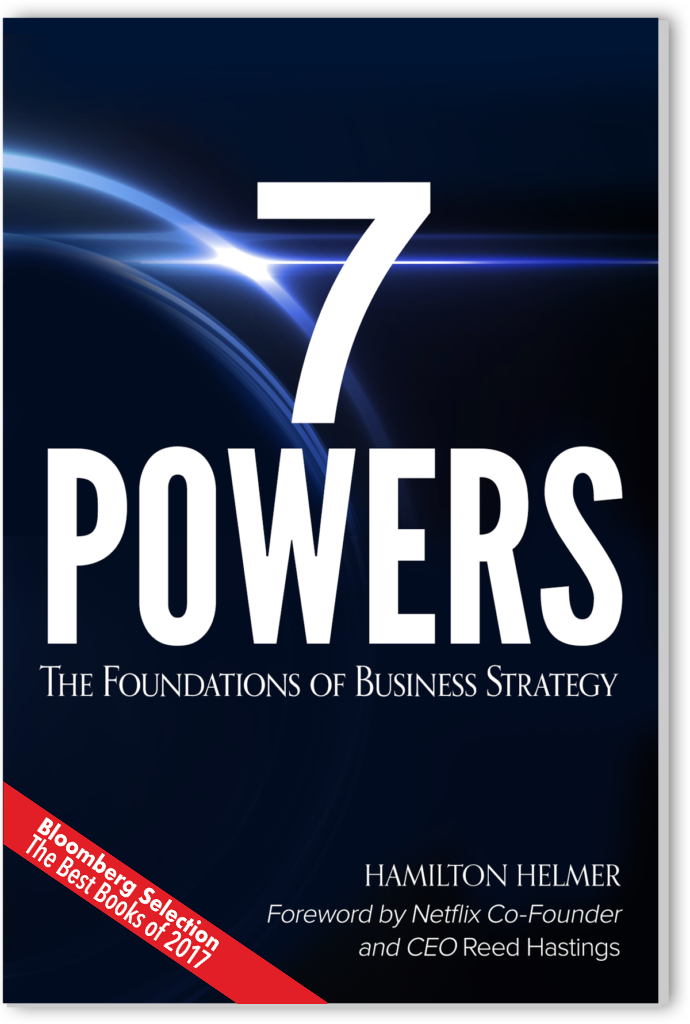Quick summary is that it covers seven sources of strategic business advantage and the order in which you should pursue those depending on company stage. To win in the long-run, operational excellence and execution aren't enough; you also need strategic advantage. The 7 powers of strategic advantage each confer a benefit to the company and introduce barriers preventing competitors from copying or neutralizing that advantage. As your business progresses, different sources of power become available.
Here are the company stages, powers that are unlocked at each stage, and a short description of each:
- Early Stage (Start-up): counter positioning (position where incumbents can't follow) and cornered resources (patents, IP, people)
- Growth Stage: scale economies (lower per-unit costs), network economies (product is more valuable the more widely it's used), and switching costs (prohibitive costs to switching to a different product)
- Stable Stage: brand (historical information that reduces buyer risk) and process power (internal processes that take an extended commitment to develop)
The book itself is pretty short, so definitely worth the time.
Or alternatively, Lenny's Podcast also did a great interview with Helmer. That's worth checking out as well (he includes a brief summary of the 7 powers in his post). There are some interesting viewpoints, including:
- why Uber doesn't have network economies (but instead modest scale economies)
- three layers of companies that benefit from technologies like AI (company that creates the technology; companies that wouldn't exist without the technology, i.e. applications; and companies that utilize the applications)
- why operational excellence is not strategy (but why it's essential for strategy)
- how there are only three things that create value (power, market size, operational excellence)
- the dance between capitalism and democracy (and how our deadlock on this is leading to dangerous levels of debt)
- how action is the first principle of business

Comments